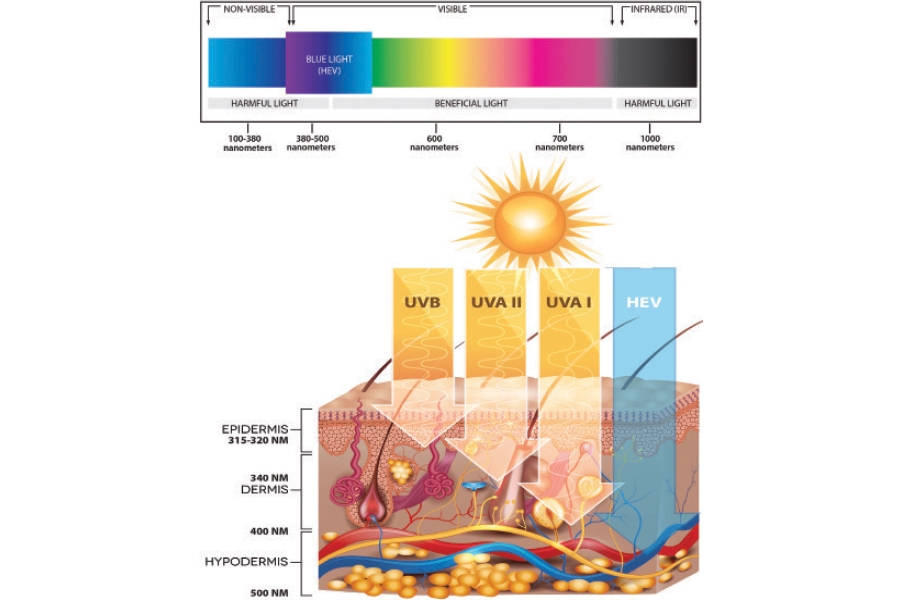A Case of the Blues – the Potential Risks of HEV Light
Written by Micah KopchenkoThough most know of the harmful effects of the sun’s invisible ultraviolet rays, many are unaware that the sun also emits various wavelengths of visible light that can also cause potential damage. Among these visible rays is blue light, also known as high-energy visible light (HEV). The biggest source for exposure to blue light is the sun, but it is also emitted by electronic devices and LED and fluorescent lighting; however, blue light emitted by man-made sources is said to be marginal in comparison to that emitted by the sun.
Studies are minimal – and inconclusive – on the subject of potential hazards caused by blue light exposure, but more and more research has begun popping up to support evidence of risks such as accelerated skin aging, photoaging, and hyperpigmentation, as well as exacerbation of pre-existing skin conditions like melasma and acne. Blue light exposure is also linked with macular degeneration, as the human eye is ineffective at blocking visible blue light.
When it comes to protecting the skin, sunscreens, serums, and other blue-light-specific products that are rich in antioxidants and contain iron oxide may be helpful. For protecting the eyes, polarized glasses and sunglasses that have lenses coated with blue light-blocking, anti-reflective coating are a great idea. As with ultraviolet radiation, the best protection against blue light exposure is prevention. This can include minimizing time spent directly in the sun, wearing sun-protective clothing, and using blue light-shielding add-ons to digital devices.
